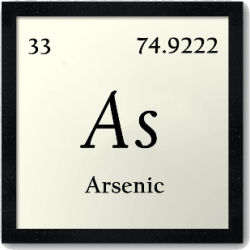NF is a type of membrane filtration that separates particles based on their size using a semipermeable membrane. The membrane has tiny pores that are smaller than those found in microfiltration (MF) but larger than those in reverse osmosis (RO). NF membranes can remove larger ions and molecules from the water than RO membranes can, but they are less effective at removing smaller ions and molecules than RO membranes.

One of the most significant advantages of using NF in arsenic removal from water is that it can be operated at a relatively low pressure compared to RO, which makes it more cost-effective. Additionally, NF membranes can better remove other species present in water, such as total dissolved solids (TDS), than RO.
Several commercial NF membranes are available in the market, and these membranes have been tested for their efficiency in arsenic removal. However, the efficiency of these membranes depends on several factors, including feed water quality, the concentration of arsenic in the water, the pH of the water, and the membrane properties. Additionally, these commercially available membranes are relatively expensive, which makes them less accessible for widespread use in developing countries.
To address this issue, researchers have started to synthesize novel nanofiltration membranes that can remove arsenic more efficiently and at a lower cost. These membranes are made from cheaper materials and can be produced using simpler techniques than commercial membranes. Researchers have tested several of these novel membranes in various laboratory settings, and the results show that they can remove arsenic from water efficiently.
However, like all technologies, NF has its limitations. One of the significant limitations of the NF process is that it does not remove all arsenic from water. Some traces of arsenic can still remain in the water, which means that NF must be used in conjunction with other treatment processes, such as adsorption, oxidation, or coagulation.
In conclusion, nanofiltration technology holds immense potential in removing arsenic from water. However, researchers need to develop more efficient and cost-effective membranes and optimize them for specific water sources. The technology can significantly benefit communities in developing countries where access to clean water is limited. Additionally, combining NF with other treatment processes can improve its efficiency in removing arsenic from water. Overall, nanofiltration is a promising technology that can help solve the growing problem of arsenic contamination in drinking water.
Keywords: Cheap Ultrafiltration, Nanofiltration, arsenic removal, membranes, water treatment.